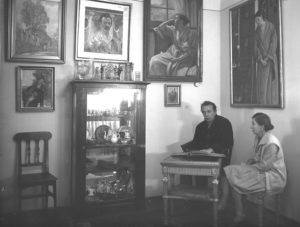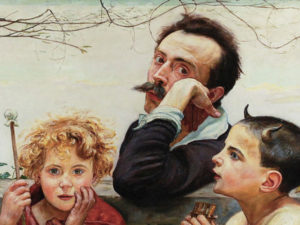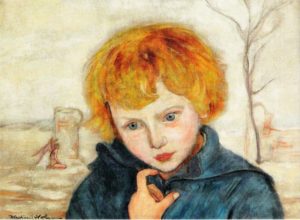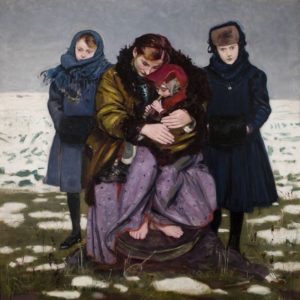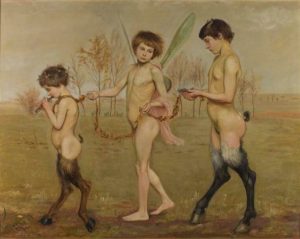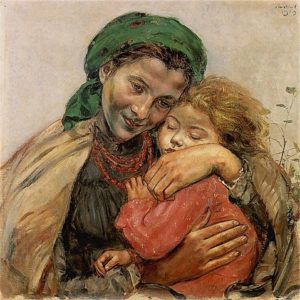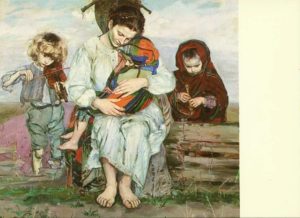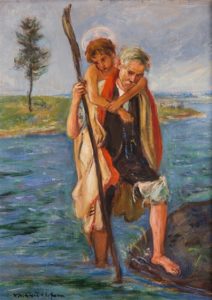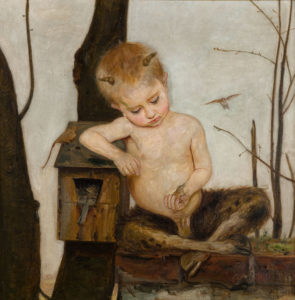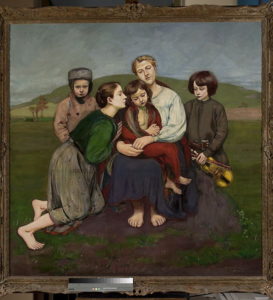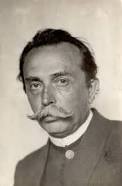The artist was born on the 27th of April in 1881 in Carlin (a suburb of Prague), Austria-Hungary.
1881 - 1970
Wlastimil Hofman
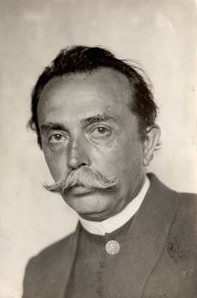
description
Polish and Czech artist and graphic artist. One of the most famous European painters, who left a legacy in the late Symbolism and the modern era.
Was born in Austro-Hungarian Prague (Karlin district), in the family of Czech Ferdinand Hoffman and Polish woman Teofila Terletskaya and was the youngest of six children.
Hofmann is a representative of large artists’ societies “Art” and “Young Poland”, Czech association “Manes”. The first Polish artist, who became a member of the Vienna Secession. In Poland, the merits of Wlastimil Hoffman were marked by the Gold Medal (1929), the Golden Cross (1933), The Order of Polonia Restituta (1937 and 1961), and the Czech Order of the White Lion (1948).
One of the art critics called Wlastimil Hoffman, a prominent representative of the late era of Polish Symbolism, “a painter of inner glow.”
The House of Hoffmann in Szklarska Poręba on the street of his name according to his will works as a mini museum for tourists and is open as a studio for artists.
Key ideas:
– One of the most talented students and certainly the most devoted follower of Polish Symbolist Jacek Malcevsky, created canvases, which are an excellent illustration of his own definition of himself – “the artist of thoughts and experiences.” At the same time, artistic creativity is perceived by the painter only as “service to God.”
– Forming his views on the role of art in the life of society, Hoffman put first the question of the national identity of the creator. He saturated both traditional religious, mystical, and fabulously fantastic paintings with elements of folk Polish art. In iconography, such as “Madonna”, “John the Baptist”, “Pietta”, etc., the characters are depicted in folk costumes, and in the surrounding landscapes you can recognize the artist’s native places. The master painted many pictures on folklore subjects, created stories from the life of peasants and mountaineers, rural children, and also ghouls.
– Hofmann’s leading principle in the formation of stories is descriptive, even if these are fantastic compositions and self-portraits (for example, “Self-Portrait with a Fairy”, 1920). To such a visualization formula, a lyrical component and accented color solutions of the image are always added. This feature is also evident in the numerous portraits of local residents and tourists.
– Being a passionate sports lover, especially the lover of football, the master devoted much time to this topic. The eye of the artist appreciated the human body in motion. He skillfully conveyed the charm of the sporting event, the joy of the winners and the sorrows of the losers in pictures.
1881
1889
1895
1899
1901 - 1902
1904
1907
1914
1929
1939
1946
1970
The birth of the artist
The family moved to Krakow
The family moved to Krakow (Poland), where the future artist studied at the school of Jan III Sobieski.
Visited Florian Kunk's studio lectures on the theory of drawing
Visited Florian Kunk’s studio lectures on the theory of drawing. A year later, he studied painting and drawing at the Academy of Fine Arts in Cracow under the direction of G. Malkzyusky, J. Stanislavsky, J. Malczewski, remaining their faithful follower all his life.
He continued his studies with Jean-Leon Gerome in Paris
He continued his studies with Jean-Leon Gerome in Paris, enrolling in the National Higher School of Fine Arts.
He studied at the workshop of Leon Vychulovsky
Returning to the alma mater, he studied at the workshop of Leon Vychulovsky.
Joined the Association of Polish Artists "Art"
Joined the Association of Polish Artists “Art”, the society of Czech artists “Manes”, organized with his friends a group of five; painted his first “Madonna”.
He was offered a membership in the Vienna Art Gallery
Became the first artist from Poland, who was offered a membership in the Vienna Art Gallery (Vienna Secession).
Lived and worked in Prague and Paris
Lived and worked in Prague and Paris until 1921; became a member of the National Society of Fine Arts in Paris.
Was awarded the Gold Medal for merits in the field of art
Until 1937, he worked actively and participated in exhibitions, was awarded the Gold Medal for merits in the field of art, a gold medal at the National Exhibition (Poznan), the Golden Cross, the officer’s cross of the Order of the Renaissance of Poland.
He was forced to emigrate
During the war, he was forced to emigrate through Volhynia to Turkey (Istanbul), lived in Haifa, Tel-Aviv, Jerusalem until 1946.
Was awarded the Order of the White Lion
After returning to Poland, he settled down in the small town of Szklarska Poręba; was awarded the Order of the White Lion (Czechoslovakia). In 1961, he received the Commander’s Cross with the star of the Order of the Renaissance of Poland.
The death of the artist
Wlastimil HofmanHe died on the 6th of March 1970 in Szklarska Poreba, Lower Silesia, Poland.

